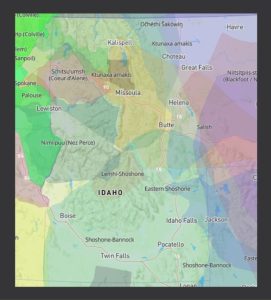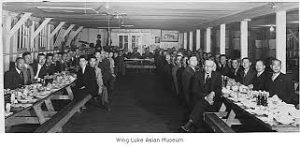Signed into law by President Chester A. Arthur, the Chinese Exclusion Act implemented mass discrimination against Chinese people and Chinese-Americans and prohibited all immigration of Chinese laborers. The Act was not repealed until 1943.
May 28, 1830, Indian Removal Act
Under President Andrew Jackson, the U.S. Congress passed the Indian Removal Act removing Indigenous people from their land and forcing them onto reservations throughout the 1800s.
Read More
May 28, 1830, Indian Removal Act
1783, Treaty of Paris
With the signing of the Treaty of Paris, the British gave the Indigenous people’s lands to the U.S. government.
Read More
1783, Treaty of Paris
1776, United States Gains Independence
The United States became an independent nation despite the Indigenous nations that already existed within the Americas.
Read More
1776, United States Gains Independence
1619, Slavery in the Americas
The first African people to reach the English colonies arrived in Jamestown, Virginia. Dutch traders seized the enslaved people from a captured Spanish slave ship. European colonizers continued enslaving Africans until about 1865.
Read More
1619, Slavery in the Americas
1492, Colonization of the Americas
From 1492 into the 20th Century, Europeans have displaced and killed Indigenous people through war, violence, disease and enslavement. From the 15th Century onward, Indigenous people fought colonization, destruction and genocide of their people, language, culture, land, water and resources.
Read More
1492, Colonization of the Americas
Before 5000 BCE, Precolonial Americas
Indigenous peoples lived in the Americas and what is currently called the United States as early as 5000 BCE. Initiated by these early settlers, the United States became established in the East and colonized the continent through land grabs and genocide. Following a belief in Manifest Destiny, these efforts led the settler colonials all the way to the Pacific Ocean.
At IFHC we recognize that these land grabs as well as the removal of people from their homes because of their race, religion, color, etc. are violations of the Fair Housing Act and therefore, the very first Fair Housing violation in the United States was the violent removal of Indigenous people from their land.
📍 Lands of the Shoshone-Bannock, Nimiipuu, Lemhi-Shoshone, and Schitsu’umsh
Find out whose land you are on: https://native-land.ca/
Read More
Before 5000 BCE, Precolonial Americas
February 19, 1942, Japanese Internment
“It didn’t matter if you were a U.S. citizen, it didn’t matter if you were born as an American, all that mattered was that your skin color was dark… and therefore you were seen as a threat because of Pearl Harbor.”
– Emily Tani-Winegarden, Grand Daughter of Tad and Yoshi Tani who were both Incarcerated at the Minidoka Internment Camp in Southern Idaho
In one of the United States’ greatest Fair Housing violations, President Franklin Delano Roosevelt issued Executive Order 9066 on February 19, 1942 which sentenced nearly 120,000 innocent Japanese Americans to incarceration in internment camps for the following 2-4 years. Over two-thirds of the people of Japanese ethnicity who were incarcerated — almost 70,000 — were American citizens. Many of the rest had lived in the country between 20 and 40 years.
No Japanese-American citizen or Japanese national residing in the United States was ever found guilty of sabotage or espionage.
In December 1982, the Commission on Wartime Relocation and Internment of Civilians concluded that the incarceration of Japanese Americans had not been justified by military necessity. The report determined that the decision to incarcerate was based on “race prejudice, war hysteria, and a failure of political leadership.”

